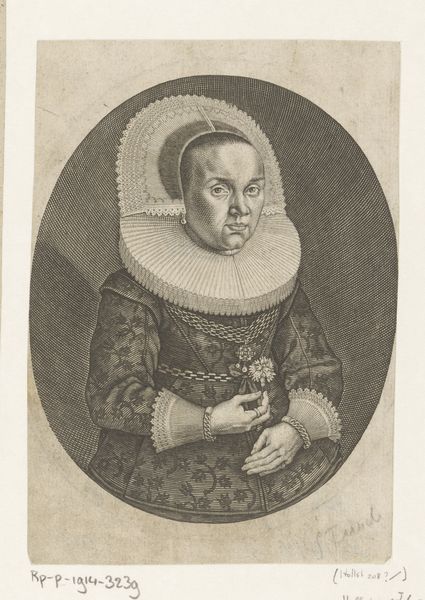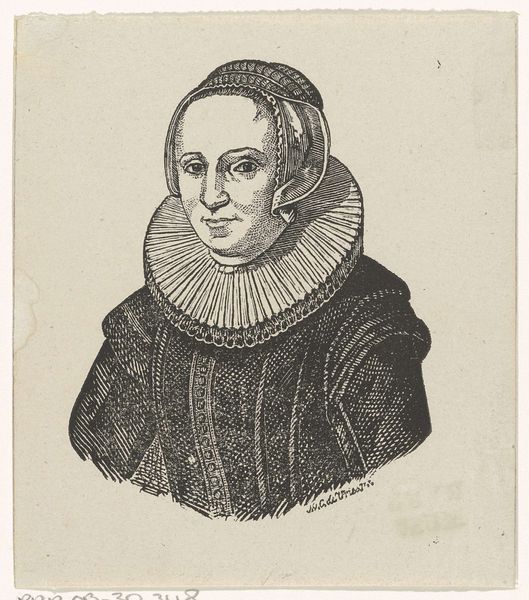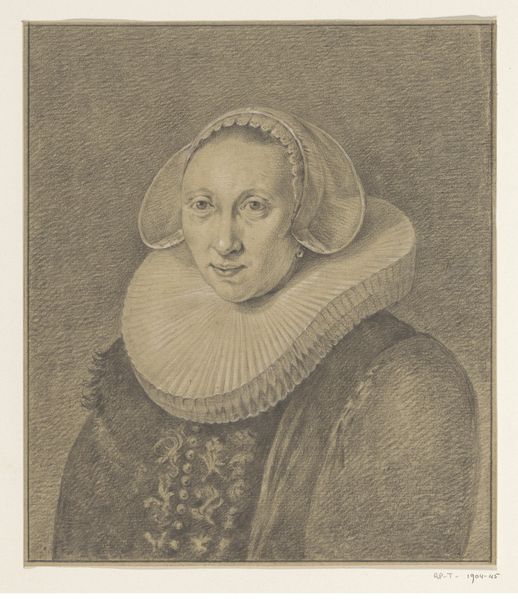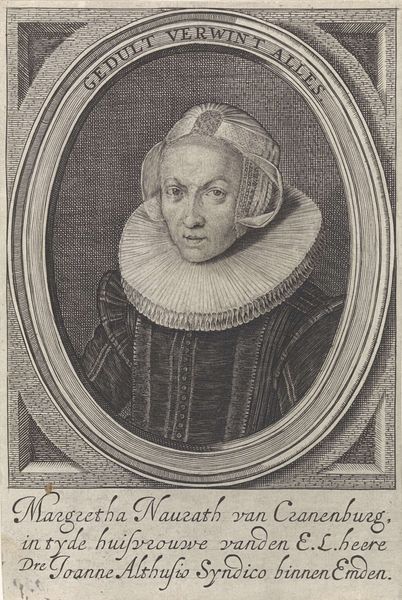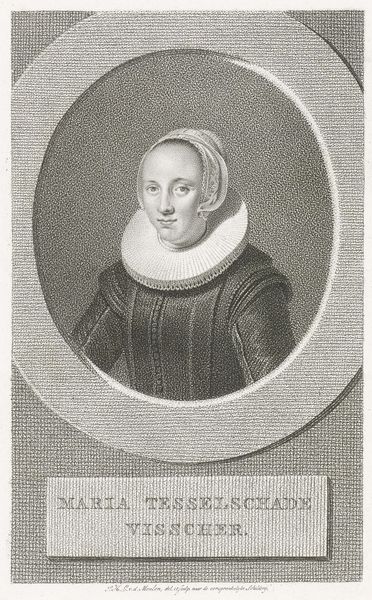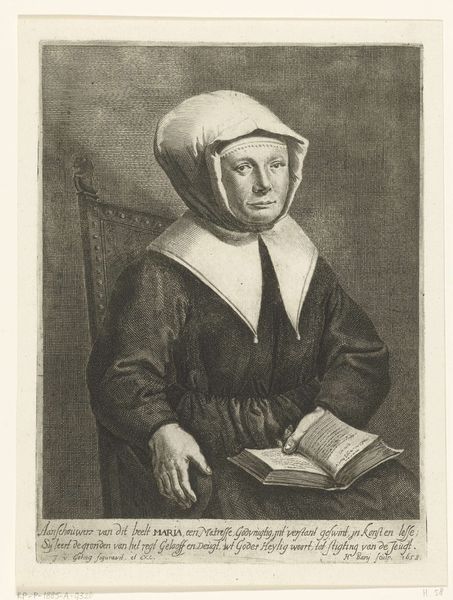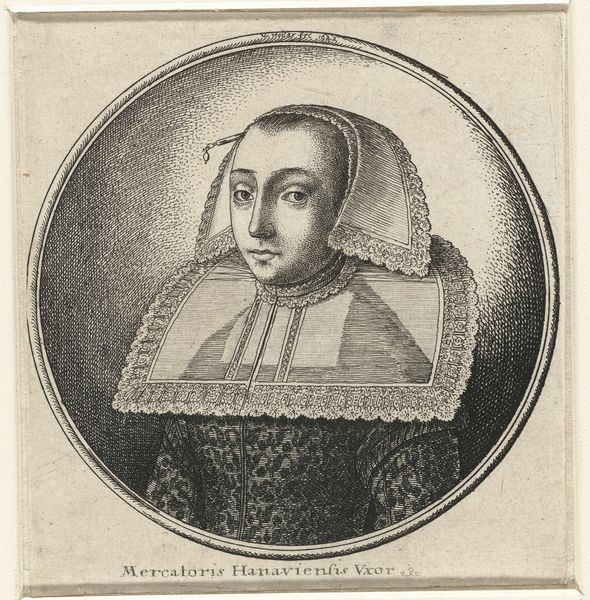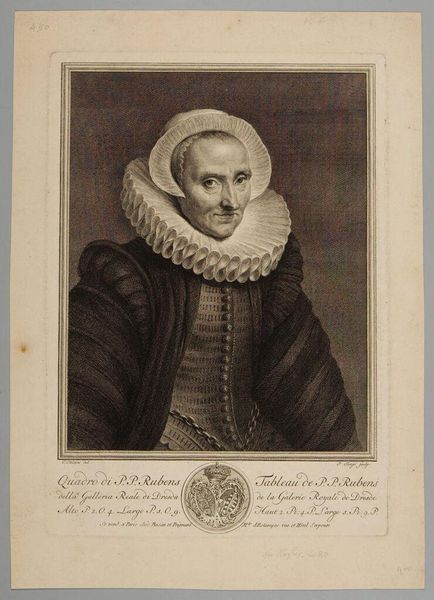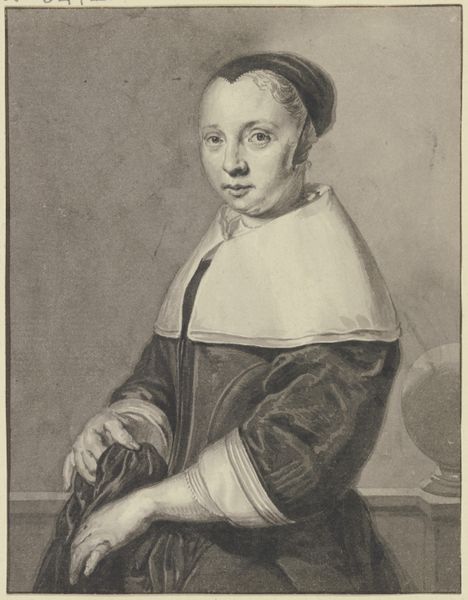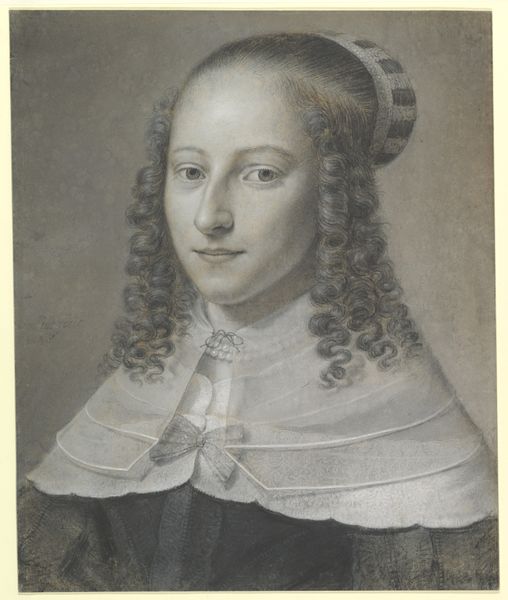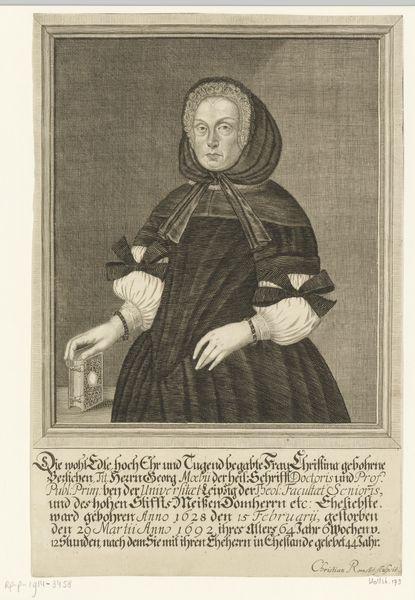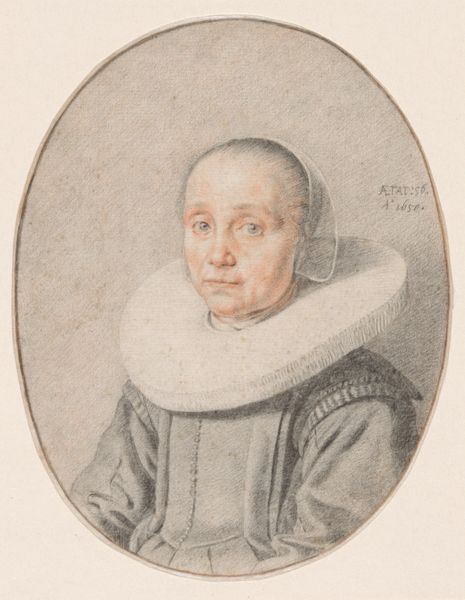
drawing, ink
#
portrait
#
drawing
#
old engraving style
#
caricature
#
personal sketchbook
#
ink
#
portrait drawing
#
watercolour illustration
#
genre-painting
Dimensions: height 275 mm, width 175 mm
Copyright: Rijks Museum: Open Domain
Editor: This is "Portret van Johanna van Berckel in ovaal," dating from 1670 to 1704, by Cornelis Dusart. It's an ink drawing, and something about the subject's gaze and the stark ruff collar gives it a very formal and somewhat imposing feel. What can you tell me about it? Curator: Looking at Dusart's portrait through a historical lens, what strikes me is the statement it makes about Dutch society at the time. Portraits like these were markers of social status and familial pride. Who was this woman? Who commissioned this image? Knowing these social details illuminates its broader cultural significance, don’t you agree? Editor: That’s a great point! The Rijksmuseum description tells me her name and gives details about her parents and husband but says nothing about Dusart. She's identified as a "woman of quality," though the term feels vague and even superficial. Did artists have greater freedom or pressure depending on the social status of the patrons during that period? Curator: Absolutely. The socio-political landscape profoundly affected artistic creation. An artist working for wealthy families had different constraints and freedoms than, say, an artist dependent on church commissions. Dusart’s rendering here suggests an understanding of his patron's aspirations – notice how Johanna is positioned and styled. How does this specific portrayal contribute to cementing her public identity, or her family's public standing? Editor: That’s fascinating! I hadn’t considered the level of social strategy involved in something like a portrait. The inscription certainly adds another layer, too. Curator: Precisely! So much more than just artistic skill is at play here; there's social maneuvering, too. Hopefully, now you have a sense for reading these portraits as reflections of a much larger, often hidden, history. Editor: Definitely! It makes me appreciate how art acts as both a cultural mirror and a carefully constructed facade. Thanks!
Comments
No comments
Be the first to comment and join the conversation on the ultimate creative platform.
